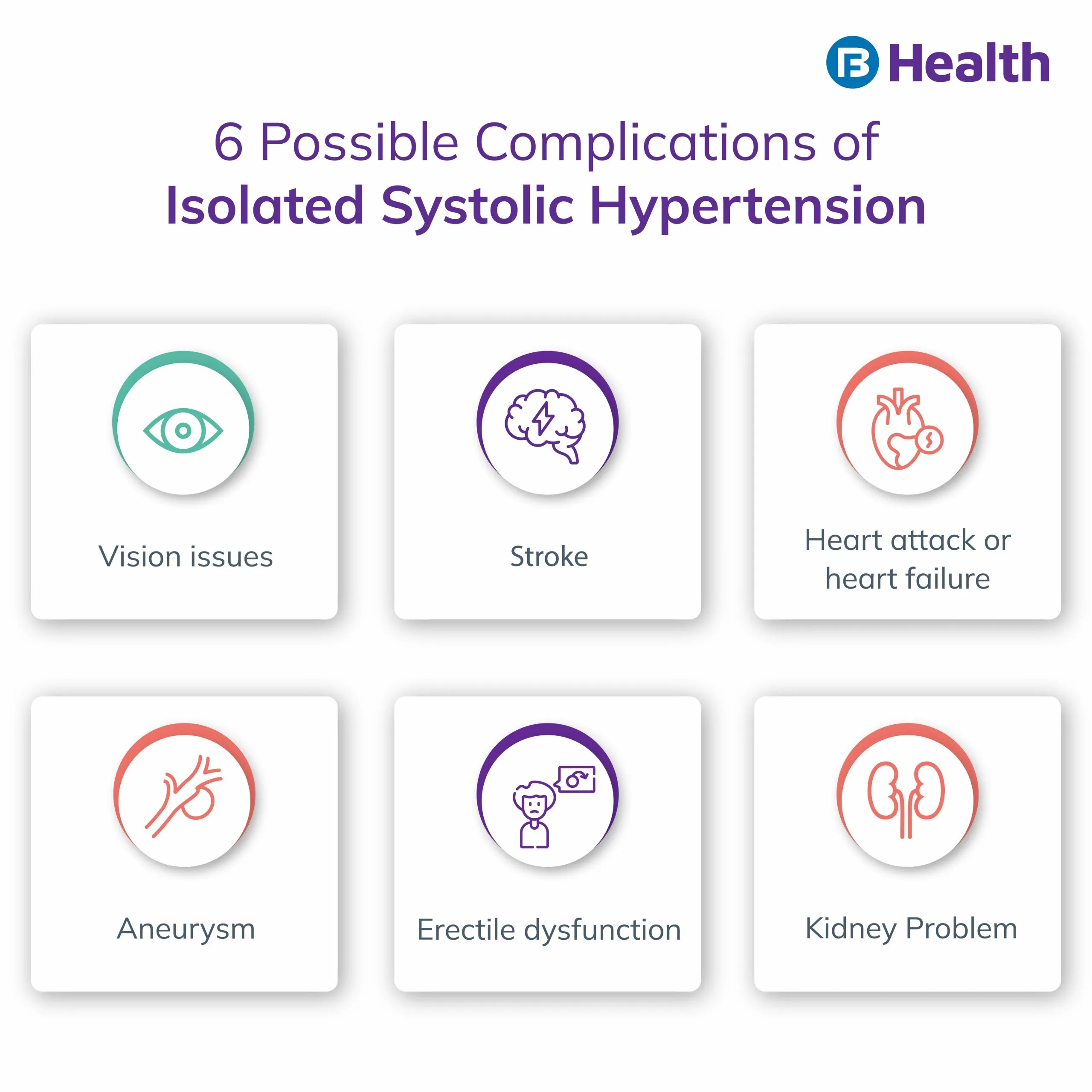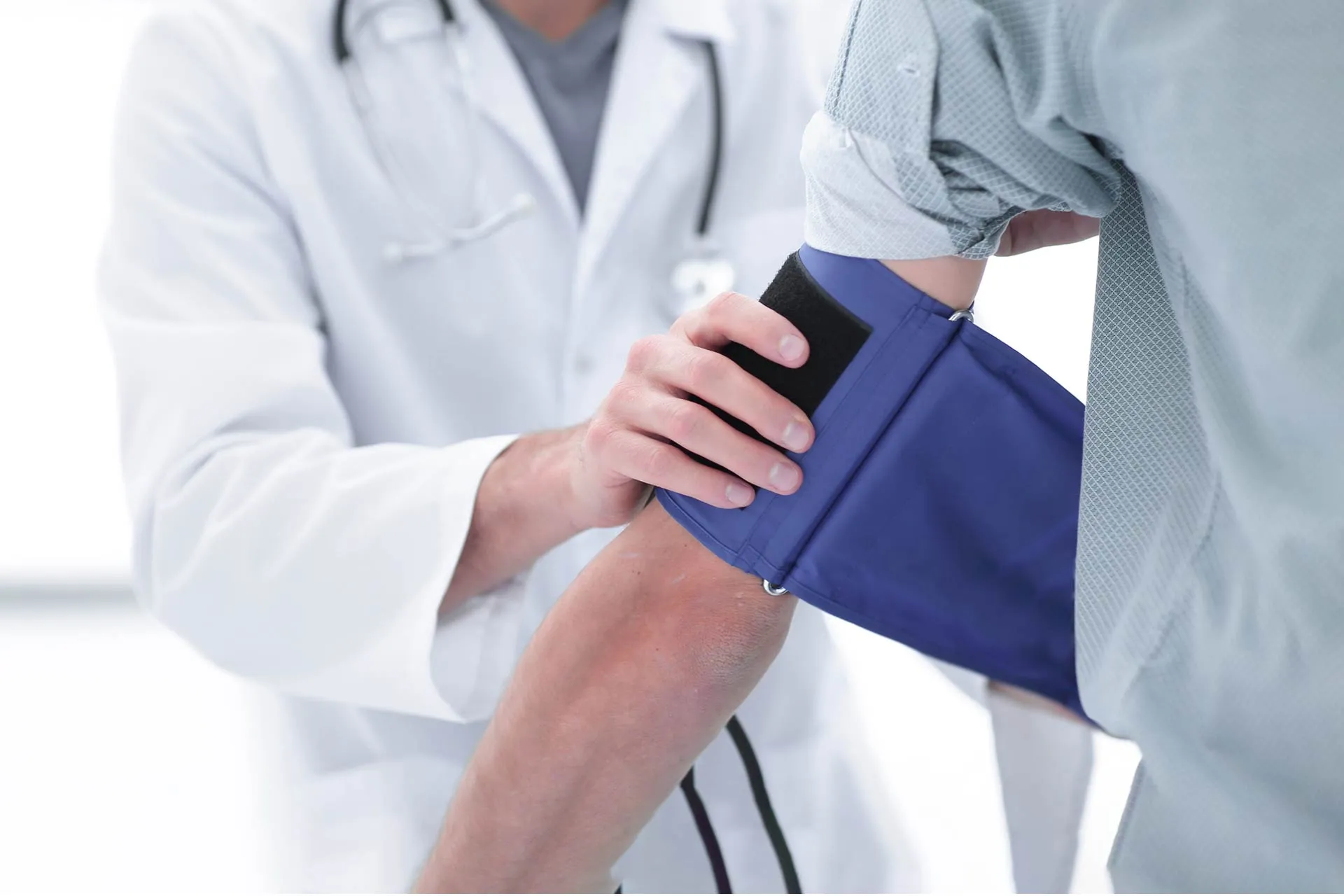Hypertension | 4 min read
Isolated Systolic Hypertension: 4 Things for You to Know!
Medically reviewed by
Table of Content
Key Takeaways
- Isolated systolic hypertension is usually asymptomatic
- Isolated systolic hypertension causes headaches and nausea
- <a href="https://www.bajajfinservhealth.in/articles/a-guide-to-types-of-hypertension-how-to-manage-and-treat-high-blood-pressure">Manage this type of hypertension</a> with medication and lifestyle changes
Isolated systolic hypertension is one of the most common types of hypertension among people above the age of 60. High BP, including isolated systolic hypertension, can damage your arteries, causing tears in the walls. About 30% of people among the senior citizen group experience isolated systolic hypertension. Doctors usually diagnose it when your systolic blood pressure is high, but your diastolic blood pressure remains normal [1].
This can also affect younger adults [2]. Generally, it is asymptomatic but at times can cause serious complications if not treated. Read on to understand the common isolated systolic hypertension causes, symptoms, and treatment options.
What is the meaning of isolated systolic hypertension?
In a blood pressure reading, you get the following two numbers:
- Systolic, normal range: 120 – 140 mm HG
- Diastolic, normal range: 70 – 90 mm HG
If only your systolic number goes above 140, but the diastolic reading remains normal, it is considered isolated systolic hypertension. In case doctors diagnose you with this condition, make sure to get started with treatment as soon as possible. This way, you can prevent the condition from getting worse, like turning into malignant hypertension.
Additional Read: Malignant Hypertension: What are its Causes, Symptoms, and How to Treat it?
What are the isolated systolic hypertension causes?
Isolated systolic hypertension and usual high blood pressure have the same causes and risk factors. They include:
- Smoking
- Lack of physical activity
- Genetics
- Consuming excess alcohol
- Aging
- A diet containing high amounts of salt
- Processed foods
- Obesity [3]
- Genetic traits of conditions such as diseases of heart and kidney, diabetes, and hypertension
Isolated systolic hypertension may also occur as a result of health conditions such as:
- Diabetes
- Chronic kidney disease
- Anemia
- Diseases that affect the heart valve
- Narrowing of the arteries
What are common isolated systolic hypertension symptoms?
This does not have any noticeable signs. The only way to identify this disorder is to take regular blood pressure readings. However, here are a few symptoms that may indicate this disorder:
- Muscle weakness
- Sweating
- Depression
- Thinning skin
- Tremor
- Snoring
With isolated systolic hypertension, there are no chances of end-stage organ damage. But you may experience the following:
- Shortness of breath
- Confusion
- Nausea
- Headaches
- Problems with vision
What are the isolated systolic hypertension treatment options?
Treatment of isolated systolic hypertension includes medical intervention and some lifestyle changes. Important changes that you can make include:
- Limiting or avoiding alcohol
- Taking less amount of sodium
- Exercising regularly
- Quitting smoking
- Achieving and maintaining a healthy weight
- Managing stress
Your treatment also depends on underlying conditions, and so your doctor will guide you on the best method of treatment. Doctors may also recommend the following prescribed medications if your isolated systolic hypertension levels rise too frequently:
- Beta blocker - to control your heartbeat
- Diuretics - to aid your kidneys’ function
- Renin inhibitors - to prevent your kidneys from producing renin, a chemical that can spike your hypertension symptoms
During this time, make sure your treatment for systolic blood pressure does not cause your diastolic blood pressure levels to drop lower. Note that if your diastolic blood pressure lowers, it can cause further complications.
Additional Read: How to manage hypertension: 6 Easy Ways to Protect You from High BPIsolated systolic hypertension is one of the types of hypertension that can occur in your body. Make sure you check your blood pressure regularly to watch out for this condition. You can also get a doctor consultation on Bajaj Finserv Health to get tips on how to keep your BP levels in control. You can also cover your healthcare expenses with any of the Aarogya Care health plans available on Bajaj Finserv Health. With them, you can avail of benefits like OPD coverage, network discounts, preventive health check-up, online doctor consultation, and more.
References
- https://www.sciencedirect.com/science/article/pii/S0735109714070934?via%3Dihub
- https://www.ncbi.nlm.nih.gov/books/NBK482472/
- https://www.cdc.gov/bloodpressure/risk_factors.htm
Disclaimer
Please note that this article is solely meant for informational purposes and Bajaj Finserv Health Limited (“BFHL”) does not shoulder any responsibility of the views/advice/information expressed/given by the writer/reviewer/originator. This article should not be considered as a substitute for any medical advice, diagnosis or treatment. Always consult with your trusted physician/qualified healthcare professional to evaluate your medical condition. The above article has been reviewed by a qualified doctor and BFHL is not responsible for any damages for any information or services provided by any third party.





